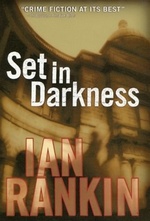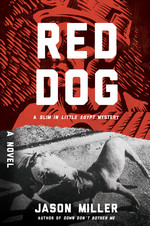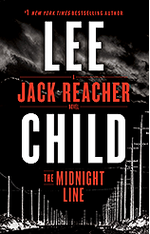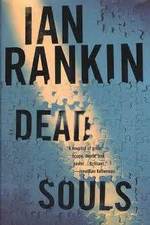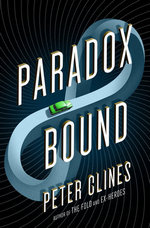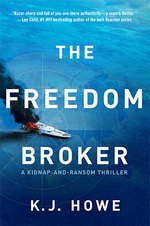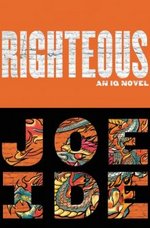by Lee Child
Series: Jack Reacher, #22Hardcover, 368 pg.
Delacorte Press, 2017
Read: November 23 – 24, 2017

“But this particular guy won’t talk to me?”
“I would be surprised.
“Does he have no manners?”
“I wouldn’t ask him over to a picnic.”
“What’s his name?”
“Jimmy Rat.”
”For real?”
“That’s what he goes by.”
“Where would I find Mr. Rat?”
“Look for a minimum six Hariey-Davidsons. Jimmy will be in whatever bar they‘re outside of.”
Three days after Make Me, Reacher hits the road — and a few hours into that, he’s already trying to track someone down. That conversation leads to the following:
There was a bar in a standalone wooden building, with a patch of weedy gravel for parking, and on the gravel were 7 Harley-Davidsons, all in a neat line. Possibly not actual Hells Angels as such. Possibly one of the many other parallel denominations. Bikers were as split as Baptists. All the same, but different.
(don’t worry, I’m not going to tell the whole story in this detail, I just really enjoyed the writing here).
Reacher goes into the bar and then has a pleasant chat with a member of the local law enforcement community and a productive chat with Mr. Rat. In between those chats he may have engaged in a physical confrontation with the owners of those motorcycles, I’ll let you guess what happened there. It was fun to read, I assure you. What led to him looking for Jimmy the Rat? Pretty simply, he saw a female West Point class ring in a pawn shop window. That’s not an easy thing to earn/deserve. Reacher figures that there’s got to be an interesting story behind such a ring ending up in a pawn shop — and maybe some fellow alumnus needs a hand, one that he can give. Jimmy the Rat is just the first link in a chain of indeterminate length back to this graduate.
Because he’s not an idiot, Jimmy points Reacher in the right direction: a laundromat in Rapid City. Also, because he’s not an idiot, before Reacher is on his way, Jimmy calls in a warning to that laundromat. Jimmy’s a rat, but he’s a survivor, too. This laundromat is owned by a guy named Scorpio, who is absolutely not Rapid City PD’s favorite small-business owner, if they could, they’d shut him down. This warning phone call, they hope, will be the harbinger of something — his downfall, or something to give them enough ammunition to arrange his arrest and downfall. Either way, the PD is fine.
Reacher has a quick conversation with Scorpio, who also points him in a direction. Reacher interacts a bit with a member of the local PD about him, as well — pointing out something that someone should’ve noticed already. There’s a PI who’s also pretty interested in Scorpio, but Reacher doesn’t get to chat with him, at least not then. When he turns up in Wyoming a few hours behind Reacher, on the other hand . . .
Reacher ends up with one of the stranger ad hoc teams he’s had to track down this woman — and the extra-legal steps he has to take to help her aren’t in his normal wheelhouse. But you go the extra mile for some people, and it’s definitely in-character and understandable for him to do what he does. There’s some interesting introspection early-on that I’m not used to seeing, and hope we get more of.
Here’s a major weakness to me (normally, I’d shrug this off, but Child gets held to a higher standard): too many people don’t know what “Bigfoot” is. If this took place in the UK or France or something, I could buy it. But in South Dakota? Sorry, not buying it.
The Midnight Line features more female characters than your typical Reacher novel — and none of them are damsels in distress. Yeah, most of them need a little help — but so do the males. Reacher’s life is even saved by one of the women. These are all strong, confident and capable women — not that the Reacher novels have ever been lacking in that regard, we just don’t normally get that many of them at once.
I don’t keep a spreadsheet or any kind of detailed notes on these things, but this might be one of the least violent Reacher novels ever. Make no mistake, Reacher has not turned into a pacifist and when he needs to punch, elbow, kick or headbutt (so soon after the concussion tests? tsk.) he does so very effectively, but I just think his count is a bit low this time).
Also, thanks Andy Martin, “Reacher said nothing.” now jumps out at me every time it shows up. How it never jumped out at me before, I’ll never know — but wow.
I really enjoyed this — it didn’t blow me away in the same way that Make Me did, but very little does. It was a lot better than Night School, however. Reacher’s knight-errant act is as satisfying as ever — maybe even moreso in this conclusion that features more details on his acts of compassion than his violence (the last violent act happening “off-screen,” although we get to see the aftermath). It was a fast read, full of action, great scenery and believable bad guys. I can’t think of much else to say — Reacher fans should love this, people new to Reacher should finish this with a desire to plunder the back-list, and everyone will start counting the days to #23.
—–


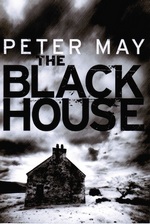 The Blackhouse
The Blackhouse




